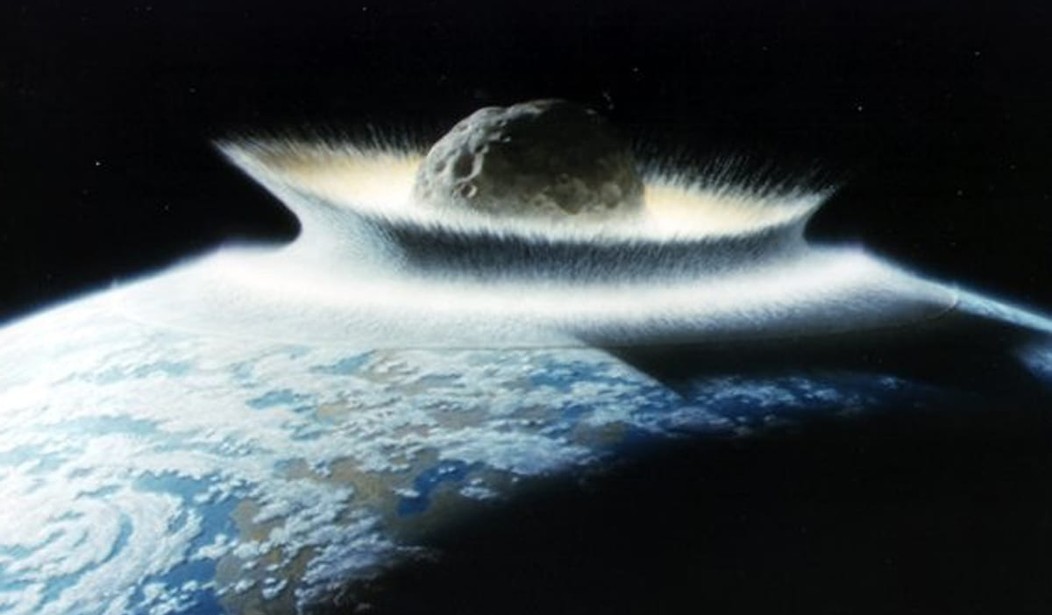Our expectations of the future are set by the past. When Stephen Hawking died in 2018, his final warning to humanity was to beware of artificial intelligence, climate change, and a meteor strike from outer space. Although these are now familiar terms, no newspaper editor before 1970 would have heard of them. Until the early 1980s, global warming fears did not exist: it was global cooling the press warned about. The now familiar dinosaur-killing Chicxulub impact crater was only found in 1978 by “geophysicists Glen Penfield and Antonio Camargo … as part of an airborne magnetic survey of the Gulf of Mexico north of the Yucatán peninsula.” Fears of runaway AI only became mainstream in the 21st century. None of these fears are more than 40 years old.
If Stephen Hawking time-traveled to whisper his final warning to Albert Einstein, the 20th-century genius would probably not have had a clue what the 21st-century physicist was talking about. Expectations can change with new information. After the Chelyabinsk asteroid hit Russia in 2013 — a little over a century after a larger impact struck Tunguska — it reopened the question of how often the earth was actually struck by such nuclear bomb-class objects. Chelyabinsk exceeded 470 kilotons of TNT and Tunguska had an estimated energy of 3 to 5 megatons.
Until recently, nobody knew the frequency. The earth is so large and until recently so sparsely populated that asteroids of this size may have been falling for some time, especially at sea, every few decades without being recorded. Only in the first decade of the 21st century did people start collecting hard data for purposes of Planetary Defense. What the B612 Foundation, a U.S.-based non-profit made up of former astronauts and scientists found was the threat relative to our tracking capability means we will likely never see one coming.
Chelyabinsk changed our perception of what the asteroid problem was. Those who feel humanity should make a multi-decade $93 trillion commitment to a Green New Deal a top priority should ask themselves how our threat perceptions would change if one Tunguska-class object strikes near a major city sometime this century. Just how quickly priorities can shift is shown by the rise and fall of China’s One Child Policy.
“In the 1970s, many countries around the world were worried about population growth, but China, with its combination of a particularly large population and a powerful government, took an extreme approach to the problem.” Everybody worried, but China took an extreme approach because it could.
In 2013, the Chinese government revealed that 336 million abortions and 196 million sterilizations had been performed since the early 1970s, when the country began moving to limit its population, according to the FT. (The one-child policy was officially put into place at the end of that decade.) The FT also reported that 403 million intrauterine devices had been inserted in women in that time, often forcefully.
Fifty years later the policy had become a disaster. Chinese fertility fell to 1.5 by the mid-1990s, well below replacement. It resulted in a “distorted population sex ratio in which the number of males far outweighs the number of females” due to sex-selective abortion and female infanticide at birth. More worrisome to leaders obsessed with China’s power, the population actually started to shrink. The New York Times reported:
Chinese academics recently delivered a stark warning to the country’s leaders: China is facing its most precipitous decline in population in decades, setting the stage for potential demographic, economic and even political crises in the near future. … A report, issued this month by the Chinese Academy of Social Sciences, is the latest recognition that while China’s notorious “one child” policy may have achieved its original aim of slowing population growth, it has also created new challenges for the government.
A decline in the birth rate and an increase in life expectancy means there will soon be too few workers able to support an enormous and aging population, the academy warned. The academy estimated the contraction would begin in 2027, though others believe it would come sooner or has already begun.
The government has recognized the worrisome demographic trend and in 2013 began easing enforcement of the “one child” policy in certain circumstances. It then raised the limit to two children for all families in 2016, in hopes of encouraging a baby boom. It did not work.
After a brief uptick that year, the birth rate fell again in 2017, with 17.2 million babies born compared to 17.9 in 2016. Although the number of families having a second child rose, the overall number of births continued to drop.
It had long been assumed that population control was easily reversible. But as Darrell Bricker and John Ibbotson argue in their coming book Empty Planet, once the birth machine is stopped, no one knows how to turn it on again. By the middle of the 21st century, the world may actually start to run out of new people. Wired asked the authors how doomsday could go from population explosion to population decline. They replied it was because “everybody knows” — but often what everybody knows is wrong.
WIRED: The UN is a well-regarded authority on everything from public health to food security and global economics. What made you think that they were getting population growth wrong?
Authors : The UN population data is something we call vertical knowledge, or “everybody knows” knowledge… And whenever that happens you should really go and look hard at the assumptions, and test them yourself, because most of the time reality has already moved past where that vertical knowledge resides.
So that’s what we did. And it didn’t take long before we realized that there was a whole body of demographers who have been questioning the UN’s numbers for years. They’ve just been talking to each other at conferences and through scholarly articles, but they’ve never gotten this information before the general public. That was kind of our starting point. And then when we went out and talked to real people in the world about the choices they’re making, that’s when the statistics we were seeing came to life.
“Everybody knows” that bridges are good and walls are bad. But events in Central America and the Middle East suggest that walls may actually play an important role in governing the global world after all. The New York Times describes a spate of intentionally brutal murders in Honduras to bolster the argument against walls. “Murder in Honduras is nothing new. But the newly sadistic ways women are being killed — shot in the vagina, strangled in front of their children, skinned alive — have people running for the border … President Trump calls immigrants ‘criminals’ — drug dealers and rapists intent on plundering America. But the truth, as I saw so clearly over a monthlong reporting trip in Honduras, is that migrants are fleeing a society controlled by criminals.”
It is, if anything, an argument for hard borders. What’s the use of fleeing to the United States if MS-13 murderers can simply follow in the victims’ wake? As someone noted on Twitter, “If America is to be a place of asylum then there has to be a way to discriminate between those who flee danger and those who are the danger. The border is the only place for that to happen.”
Walls will eventually be understood as places where information can be intelligently applied. They can make it difficult for any high-ranking Third World official to move themselves, their money, or their families to the West unless specially cleared, a concept already contained in the Magnitsky Act. “Since 2016 the bill, which applies globally, authorizes the US government to sanction those who it sees as human rights offenders, freezing their assets, and ban them from entering the U.S.” In the case of failing state officials, the prohibition could be amended to exclude them “unless proven not to be human rights offenders” and force them to have skin in the game of their own countries. Only a barrier can achieve this. Sooner or later it will become apparent that walls as well as bridges are necessary for a global world.
Maybe governments shouldn’t embark on 50-year plans given the revelatory power of new information. While people can’t help but express the future in terms of the past, it is more than likely that politicians who embark on huge programs based on multi-decade predictions will be sorely disappointed. It’s entirely probable we’ve never even heard of whatever will worry the world of 2080. Tomorrow, like the Russian sky, is full of surprises.
Follow Wretchard on Twitter
Tipjar at wretchard.com
Support the Belmont Club by purchasing from Amazon through the links below.
Books:
Ball of Collusion: The Plot to Rig an Election and Destroy a Presidency, by Andrew C. McCarthy. To be published in September 2019, this book is now available for pre-orders. McCarthy shows that the media-Democrat “collusion narrative,” scandalizing Donald Trump as cat’s paw of the Russian regime, is a studiously crafted illusion.
Into the Black: The electrifying true story of how the first flight of the Space Shuttle nearly ended in disaster, by Rowland White. Drawing on brand new interviews with astronauts and engineers, archive material and newly declassified documents, White pieces together, for the first time, what went on behind the scenes of the Columbia mission, one of civilization’s greatest achievements.
Unmasking the Administrative State: The Crisis of American Politics in the Twenty-First Century, by John Marini (author) and Ken Masugi (editor). This book tells the critical missed story of the last century’s political history: the ascendance of the theory behind a burgeoning administrative state that has supplanted limited constitutional government with an unbounded anti-constitutional bureaucracy.
Atomic Habits: An Easy & Proven Way to Build Good Habits & Break Bad Ones, by James Clear. This book offers a proven framework for improving everyday.
For a list of books most frequently purchased by readers, visit my homepage.
Did you know that you can purchase some of these books and pamphlets by Richard Fernandez and share them with your friends? They will receive a link in their email and it will automatically give them access to a Kindle reader on their smartphone, computer or even as a web-readable document.
The War of the Words, Understanding the crisis of the early 21st century in terms of information corruption in the financial, security and political spheres
Rebranding Christianity, or why the truth shall make you free
The Three Conjectures, reflections on terrorism and the nuclear age
Storming the Castle, why government should get small
No Way In at Amazon Kindle. Fiction. A flight into peril, flashbacks to underground action.
Storm Over the South China Sea, how China is restarting history in the Pacific.










Join the conversation as a VIP Member